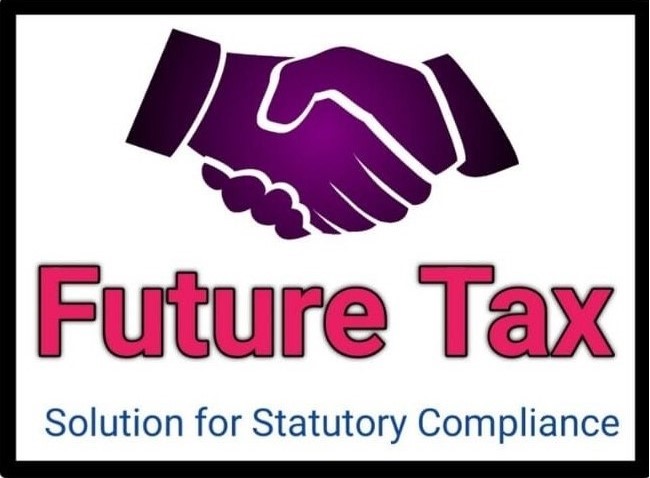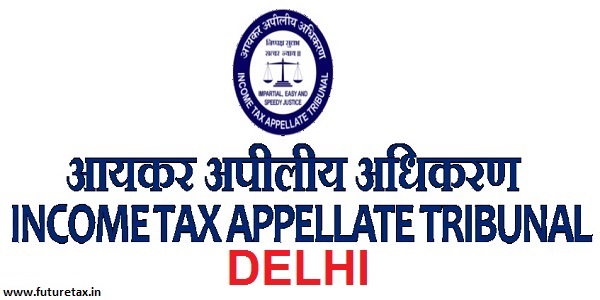
Application of 5 step Model on Renewable Energy Sector in Tamil
- Tamil Tax upate News
- February 23, 2025
- No Comment
- 49
- 28 minutes read
Summary: India’s renewable energy sector operates through long-term Power Purchase Agreements (PPAs) under regulated and open-access frameworks. Applying Ind AS 115, “Revenue from Contracts with Customers,” requires a structured five-step approach: identifying contracts, determining performance obligations, setting transaction prices, allocating revenue, and recognizing income. In the case of a solar power company’s 25-year PPA with MPPMCL, fixed tariffs, early payment incentives, and penalties impact revenue recognition. The agreement meets contract criteria under Ind AS 115, but credit risk from state-owned DISCOMs necessitates careful revenue recognition and expected credit loss (ECL) assessment. Similarly, a wind power developer’s PPA with a private steel manufacturer involves fixed and variable considerations, including Renewable Energy Certificates (RECs) and annual tariff escalations. Identifying performance obligations is crucial. While electricity supply is a core obligation, elements like incentives and penalties may be treated as finance income or variable considerations. Determining transaction prices requires evaluating fixed tariffs, variable incentives, financing components, and government grants. If RECs are independently tradable, they are a separate revenue stream; otherwise, they are bundled with electricity sales. Revenue recognition aligns with the satisfaction of performance obligations. If payment uncertainty exists, revenue may be deferred or recognized only upon cash receipt. For entities in the renewable energy sector, Ind AS 115 ensures systematic and accurate revenue accounting, considering contractual risks and financial implications.
Back ground
India’s renewable energy sector has grown rapidly over the years, driven by favourable policies, government incentives, and increasing corporate adoption of clean energy. Power generators in this sector typically enter into long-term Power Purchase Agreements (PPAs) with state DISCOMs or private consumers under regulated or open-access frameworks.
Given the unique nature of revenue contracts in this industry such as fixed or variable tariffs, incentives like Generation-Based Incentives (GBI), Renewable Energy Certificates (RECs), and payment-linked penalties or discounts, applying Ind AS 115, “Revenue from Contracts with Customers” requires careful consideration.
Application of 5 step Model on Renewable Energy Sector; Ind AS 115
Per Ind AS 115, “Revenue from Contracts with Customers”, the revenue recognition process is structured into the following five key steps:
- Identifying the contract (PARA 9 to PARA 21)
- Identifying performance obligations (PARA 22 to PARA 45)
- Determining the transaction price (PARA 47 to 72)
- Allocating the transaction price to performance obligations (PARA 72 to PARA 90)
- Revenue Recognition (PARA 46 read with other PARAs of the Ind AS)
Identifying the Contract in the Renewable Energy Sector
A contract is an agreement between two or more parties that creates enforceable rights and obligations. An entity shall account for a contract with a customer only when all of the following criteria are met:
- Approval and Commitment: The parties have approved the contract (in writing, orally, or through customary business practices), and they are committed to fulfilling their obligations.
- Identifiable Rights: Each party’s rights regarding the goods or services to be transferred can be identified.
- Identifiable Payment Terms: The payment terms for the goods or services are clearly defined.
- Commercial Substance: The contract has commercial substance (i.e., it impacts the entity’s cash flows).
- Collection Probability: It is probable that the entity will collect the consideration it is entitled to under the contract.
Application of the above provisions to Renewable Energy Sector:
Example-1: Long-Term PPA with a MPPMCL
A solar power company enters into a 25-year PPA with MPPMCL at a tariff of ₹ 4.40 per kWh, approved by the respective State Electricity Regulatory Commission (SERC). The billing mut be done on monthly basis and MPPMCL is required to pay the bill within 30 days. If payment is not made within 30 days the MPPMCL shall pay payment surcharge @ 2% p.a, over and above the short-term lending rate of the state bank of India. If the payment made with in 15 days from the date of submission of bill, an incentive of 1% of the billed amount shall be allowed to MPPMCL. The company is also entitled to Generation Based Incentive (GBI) as notified in the state.
Evaluation under Ind AS 115:
- Approval and Commitment: The 25-year PPA between the solar power company and MPPMCL is a legally binding agreement, duly approved by both parties and regulated by the State Electricity Regulatory Commission (SERC). Identifiable Rights: The contract defines the rights of both the generator (to supply power) and the MPPMCL (to receive power).
- Identifiable Payment Terms The contract clearly defines the rights and obligations of both parties:
– The power generator has the right to supply solar power at the agreed tariff.
– MPPMCL is obligated to purchase the power and make payments per the agreed terms.
- Identifiable Payment Terms:
- The fixed tariff of ₹4.40 per kWh is specified in the contract.
- Billing cycle: Monthly billing is mandated.
- Payment terms: Payment is due within 30 days of billing.
- Delayed payments: A surcharge of 2% p.a. over and above the State Bank of India’s short-term lending rate
- Early payment incentive: If MPPMCL pays within 15 days, it receives a 1% discount on the billed amount.
- Generation-Based Incentive (GBI): The power generator is also entitled to GBI as per state policy, which may be treated as a government grant under Ind AS 20 (Accounting for Government Grants and Disclosure of Government Assistance).
- Commercial Substance: The contract affects the cash flows of both parties (the power producer earns revenue, and the MPPMCL incurs procurement costs).
- Collection Probability: In India, many state DISCOMs have a history of delayed payments, and if there is significant uncertainty about payment collection, revenue recognition may be deferred.
Key Accounting Issue:
Credit Risk Assessment:
- Since MPPMCL is a state-owned DISCOM, the power company must evaluate its creditworthiness and past payment trends.
- If MPPMCL has a poor credit rating or a history of defaults, collection probability must be reassessed under Ind AS 115.
Revenue Recognition Timing:
- If payments are consistently delayed beyond 30 days, the company may need to consider recognizing revenue only when the cash is received.
- If the power company has already recognized revenue and recorded a trade receivable, it must assess the recoverability of the amount. In case of default by MPPMCL, the company should recognize an impairment loss in its financial statements as per the Expected Credit Loss (ECL) model under Ind AS 109.
- If incentives (such as early payment discounts) are frequent, they should be accounted for as variable consideration under Ind AS 115.
- Accounting for GBI (Generation-Based Incentive):
- If GBI is received separately from the government, it should be accounted for under Ind AS 20 (Government Grants) rather than Ind AS 115.
- If GBI is bundled into the contract price, it should be considered while determining the transaction price.
This can be summarize as below:
| Scenario | Revenue Recognition Impact | Variable Consideration Impact |
| MPPMCL has a weak credit profile and frequently defaults | Recognize revenue only on cash receipt (conservative approach) | No late payment surcharge should be recognized until actually paid |
| MPPMCL makes payments, but often delays beyond 30 days | Recognize revenue upfront, but assess Expected Credit Loss (ECL) under Ind AS 109 | Late payment surcharge can be estimated and recognized if collection is highly probable |
| MPPMCL sometimes pays early (within 15 days) and gets 1% discount | Recognize revenue upfront, but adjust for expected early payment discounts | Deduct 1% discount from the transaction price if historical data suggests early payments are frequent |
Example-2 A wind power developer (Seller) enters into a 25-year Power Purchase Agreement (PPA) with a private steel manufacturer (Buyer) under the Open Access framework at an agreed tariff of ₹ 4.50 per kWh, with an annual escalation of 3%. Additionally, the Buyer is responsible for paying Open Access Charges based on actual consumption. As part of the agreement, the Seller provides Renewable Energy Certificates (REC) to the Buyer on a monthly basis.
Evaluation under Ind AS 115:
- Approval and Commitment:
- The PPA is a legally binding contract signed by both parties for 25 years.
- The contract clearly defines the obligations of the Seller (to supply power) and the Buyer (to pay for the power received).
- Identifiable Rights:
- The contract outlines the Seller’s right to receive payment for power supplied.
- The Buyer has the right to receive power as per the agreed terms.
- Identifiable Payment Terms:
- The tariff is ₹ 4.50 per kWh, with a 3% annual escalation, making the pricing determinable.
- The Buyer must also pay Open Access Charges on an actual basis, which adds a variable cost component.
- Commercial Substance:
The contract affects cash flows:
- The Seller earns revenue from the power sale.
- The Buyer incurs expenses for purchasing power.
- The annual escalation clause affects both parties’ future cash flows.
- Collection Probability:
- Since the Buyer is a private steel manufacturer, the Seller must assess whether there is a significant risk of non-payment.
- If the Buyer’s credit risk is high, revenue recognition may be deferred until collection is reasonably assured.
- If the Buyer has a strong financial standing, revenue can be recognized as per the billing cycle.
Identifying performance obligations in Renewable Energy Sector
At contract inception, an entity shall assess the goods or services promised in a contract with a customer and shall identify as a performance obligation each promise to transfer to the customer either:
- A good or service (or a bundle of goods or services) that is distinct; or
- a series of distinct goods or services that are substantially the same and that have the same pattern of transfer to the customer.
Applying these provisions in example 1, will give the following results.
Step 1: Identifying Goods and Services in the Contract
The solar power company provides the following:
- Supply of Solar Power: The core obligation, sold at ₹ 4.40 per kWh.
- Early Payment Incentive: A 1% discount if MPPMCL pays within 15 days.
- Delayed Payment Surcharge: A penalty of 2% per annum if payment exceeds 30 days.
- Generation-Based Incentive (GBI): Additional revenue as per state regulations.
Each of these must be assessed to determine whether they are distinct performance obligations under Ind AS 115.
Step 2: Evaluating Distinct Performance Obligations
| Performance Obligation | Is it Distinct? | Revenue Recognition Method |
| Power Supply (₹ 4.40/kWh) | ✅ Yes | Over time (as electricity is delivered) |
| Early Payment Incentive (1%) | ❌ No | Adjusted as variable consideration |
| Delayed Payment Surcharge (2% p.a.) | ❌ No | Recognized as finance income, not revenue |
| Generation-Based Incentive (GBI) | ✅ Yes | Recognized separately upon entitlement in compliance with Ind AS 20 |
Applying the above provision in example 2
The wind power developer provides the following:
- Supply of Wind Power – The core obligation, sold at ₹ 4.50 per kWh, with a 3% annual escalation.
- Renewable Energy Certificates (RECs) – Issued monthly to the Buyer as part of the agreement.
- Open Access Charges – Paid by the Buyer based on actual consumption, but the Seller may facilitate the payment process.
Each of these must be assessed to determine whether they are distinct performance obligations under Ind AS 115.
| Performance Obligation | Is it Distinct? | Revenue Recognition Method |
| Power Supply (₹ 4.50/kWh, with 3% escalation) | ✅ Yes | Over time (as electricity is delivered) |
| Renewable Energy Certificates (RECs) | ❓ Depends | Distinct if separately priced, otherwise bundled with power supply |
| Open Access Charges | ❌ No | Pass-through cost, not revenue |
Determining the transaction price (PARA 47 to 72)
Ind AS 115 defines Transaction Price as the amount of consideration to which an entity expects to be entitled in exchange for transferring promised goods or services to a customer. For the Renewable Energy Sector, determining the transaction price requires careful evaluation of fixed and variable components, financing elements, and other contractual terms.
The transaction price includes the following elements:
- Fixed Consideration – A predetermined price per unit of electricity supplied.
- Variable Consideration – Includes performance-based incentives, penalties, and escalation clauses.
- Significant Financing Component – Adjustments if there is a significant time gap between revenue recognition and payment.
- Non-Cash Consideration – If part of the payment is in a form other than cash (e.g., Renewable Energy Certificates).
- Consideration Payable to Customer – If the seller provides incentives or rebates to the buyer.
Applying the above provision in Example 1
| Component | Nature | Accounting Treatment Under Ind AS 115 |
| ₹ 4.40 per kWh | Fixed Consideration | Included in transaction price at contract inception. |
| Early Payment Incentive (1%) | Variable Consideration | Estimated based on past trends and adjusted to revenue. |
| Delayed Payment Surcharge (2% p.a.) | Financing Component | Accounted for separately under Ind AS 109 as finance income. |
| Generation-Based Incentive (GBI) | Variable Consideration | Recognized only when entitlement is reasonably certain. |
Applying the above provision in Example 2
| Component | Nature | Accounting Treatment Under Ind AS 115 |
| ₹ 4.50 per kWh (Base Tariff) | Fixed Consideration | Included in transaction price at contract inception. |
| 3% Annual Escalation | Variable Consideration | Recognized when probable and estimable. |
| Open Access Charges | Pass-Through Cost | Not part of revenue; treated as a reimbursement. |
| Renewable Energy Certificates (RECs) | Variable or Fixed | Assessed separately to determine if revenue should be recognized separately. |
Allocating the Transaction Price to Performance Obligations
Under Ind AS 115, once the transaction price is determined, it must be allocated to the identified performance obligations in proportion to their standalone selling prices (SSP). The allocation process ensures that revenue is recognized appropriately as obligations are fulfilled.
Applying the above provision on example 1:
| Performance Obligation | Standalone Selling Price (SSP) | Allocated Transaction Price |
| Electricity Supply (Primary Obligation) | ₹ 4.40/kWh | ₹4.40/kWh (unless reduced by incentives) |
| Early Payment Incentive | (-1% of Billed Amount) | Deducted from revenue when probable |
| Late Payment Surcharge | Separate Finance Income | Recognized under Ind AS 109 |
| Generation-Based Incentive (GBI) | Contingent Income | Recognized separately if assured |
Applying the above provision on example 2:
| Component | Nature | Accounting Treatment Under Ind AS 115 |
| Base Tariff ₹ 4.50/kWh | Fixed Consideration | Included in transaction price at contract inception. |
| Annual 3% Escalation | Variable Consideration | Included in transaction price only if contractually fixed; otherwise, recognized when probable. |
| Renewable Energy Certificates (RECs) | Variable or Fixed Consideration | Assessed separately based on whether they are distinct or bundled with electricity supply. |
| Open Access Charges | Pass-Through Cost | Not part of revenue; treated as a reimbursement. |
Evaluating Whether RECs Are a Distinct Performance Obligation
Under Ind AS 115, a performance obligation is distinct if:
- The Buyer can benefit from the good or service on its own or with other resources available to them.
- The promise to transfer the good/service is separately identifiable in the contract.
✔ If RECs have a market value and can be sold independently, they are a separate performance obligation.
❌ If RECs are bundled with electricity and the Buyer cannot resell them separately, they are not distinct and are part of electricity revenue.
Allocating the Transaction Price Using the Standalone Selling Price (SSP) Method
| Scenario | Electricity SSP | REC SSP | Total |
| If RECs are bundled (Not distinct) | ₹ 4.50/kWh | ₹ 0.00/kWh | ₹ 4.50/kWh |
| If RECs are separate (Distinct) | ₹ 4.20/kWh | ₹ 0.30/kWh (Market Price) | ₹ 4.50/kWh |
Revenue Recognition
When (or as) a performance obligation is satisfied, an entity shall recognize as revenue the amount of the transaction price (which excludes estimates of variable consideration that are constrained in accordance with paragraphs 56–58) that is allocated to that performance obligation.




